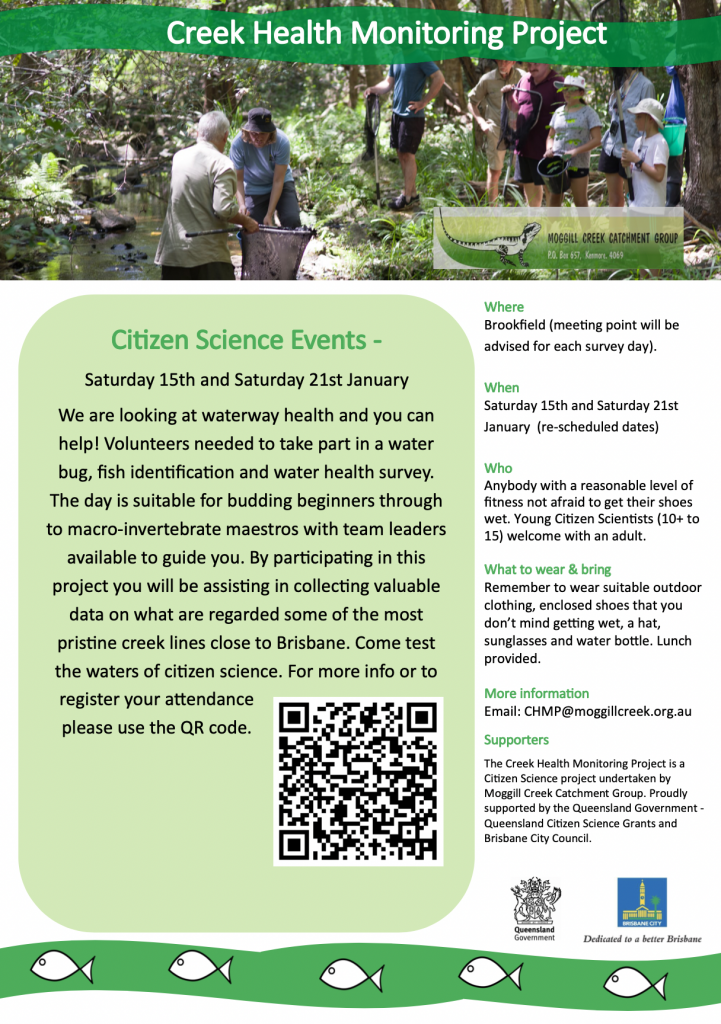Creek Health Monitoring Project
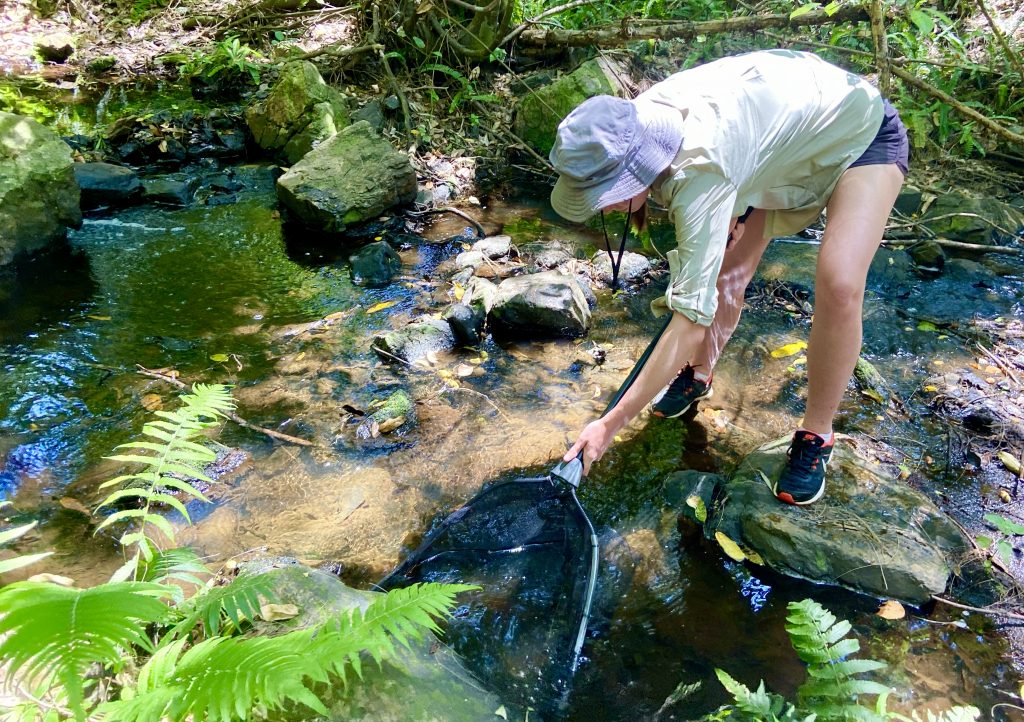
Moggill Creek Catchment Group (MCCG) are thrilled to announce the receipt of a Queensland Citizen Science Grant from the Queensland Government. The existing Creek Health Monitoring Program (CHMP) will receive a significant boost and encourage citizen scientists to better understand our waterways. This program will introduce community volunteers to the factors that affect creek health and will emphasise the relevance of this information to the community.
Volunteer citizen scientists will take part in monitoring water quality, diversity of macro- invertebrates and fish, and nearby creek conditions. The data will be used to assess creek health at sites across Moggill Creek Catchment, and to promote the benefits of environmental health of our waterways.
We encourage those who want to get involved in this citizen science project to get in contact with
Lewis Peach – email: [email protected]
and follow the CHMP on social media: Facebook MCCG – Creek health monitoring project
2023 survey dates to be announced soon!
The aim of the Creek Health Monitoring Program (CHMP) is to provide baseline information on the aquatic ecosystem health of the Moggill Creek Catchment. Data are being gathered on fish, aquatic macro-invertebrates, habitat and water quality. This will assist in making decisions on where efforts are required in land and water management.
In addition to water quality and riparian habitat, the CHMP monitors both fish and macro-invertebrate populations, while most creek health monitoring programs only monitor macro-invertebrates.
The objectives of the CHMP are:
- To assess current conditions throughout the catchment by identifying and establishing baseline values of the aquatic ecosystem health of Moggill Creek Catchment (fish, aquatic macro-invertebrate, habitat and water quality).
- To monitor trends through time in baseline values to determine decline or improvement in condition.
- To determine spatial and temporal trends in the aquatic ecosystem health throughout the Moggill Creek Catchment. This would be particularly useful for assessing impacts that are occurring or may occur in the future in the catchment (NB: There will be some limitation in the methods used to confidently assess impacts of activities in the catchment, but it will provide an indication of an impact).
- To identify reaches which require particular attention for rehabilitation or protection.
- To increase community awareness and knowledge of issues and relevant skills relating to water quality, creek health and subsequent effects on aquatic ecosystem health.
- To identify issues and opportunities for improving the condition of waterways and take action to address these.
- To foster partnerships between Moggill Creek Catchment Group with other groups e.g. University of Queensland, Healthy Land and Water, Brisbane City Council.
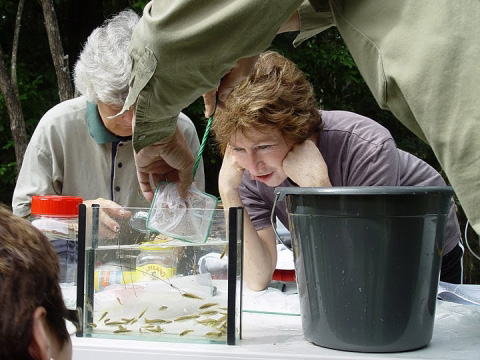
This is an on-going monitoring program, with the 12 sites across the catchment (in Moggill Creek and its tributaries Gold Creek, Gap Creek and McKay Brook) to be monitored twice a year: in April, after the rainy season, and again in October, after the dry season.
The CHMP is lead by MCCG Committee Member Adrian Webb and supported by professional aquatic ecologist Dr Tim Howell. Over 30 local volunteers will make up the 6 CHMP teams. Each team is assigned to two monitoring sites and has a volunteer team leader who is responsible for the smooth running of each session, looking after the Equipment Kits, and liaising between their teams and the Creek Ranger. Funds for the Equipment Kits have been provided by Hydrobiology and the Moggill Creek Catchment Group.
Volunteers are provided with training in fish and macro-invertebrate sampling techniques and identification, and are given Freshwater fish guide and Notes on fish to assist with this task.
After each successive monitoring session, the data will be added to a growing data base of fish, macro-invertebrate, water quality and riparian habitat variables which will overtime provide sound and scientifically robust spatial and temporal trends of the aquatic ecosystem health of the catchment. Furthermore, water quality data gathered will be uploaded to the Unidap WaterQ on-line database managed by SEQ Water.
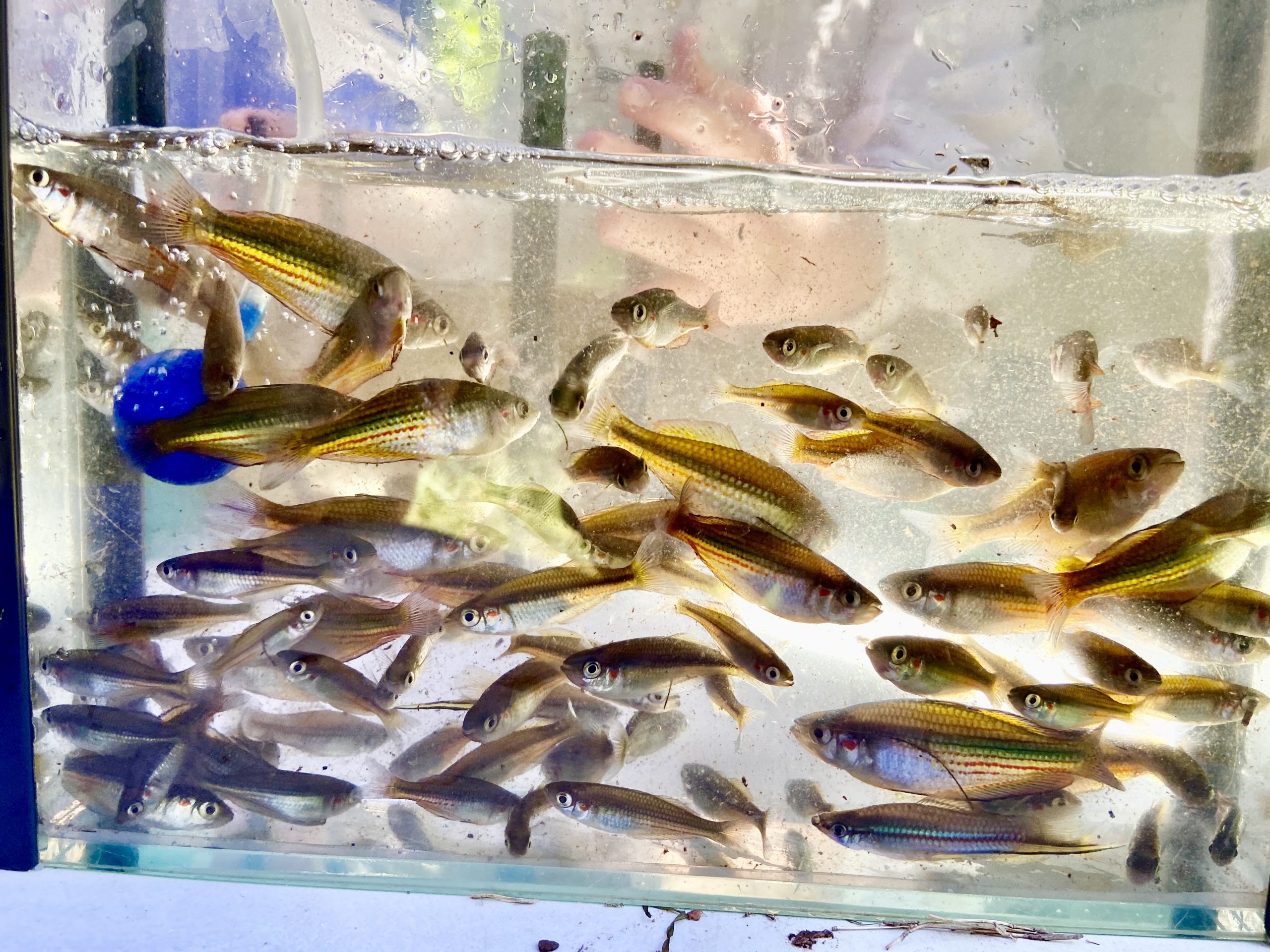
Fish samples from the box trap (photo: Tracey Read)
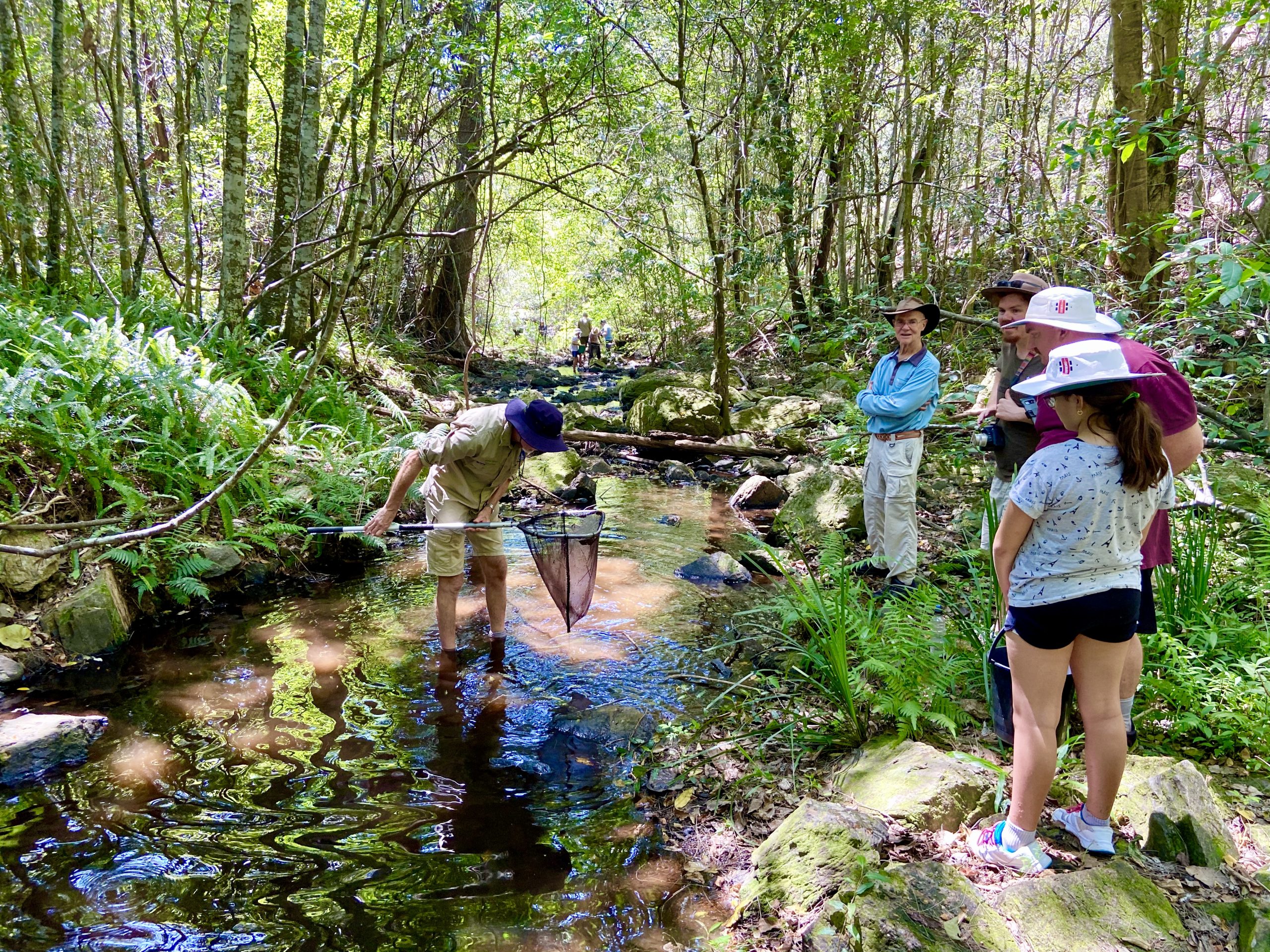 Practising fish net technique (photo: Tracey Read)
Practising fish net technique (photo: Tracey Read)
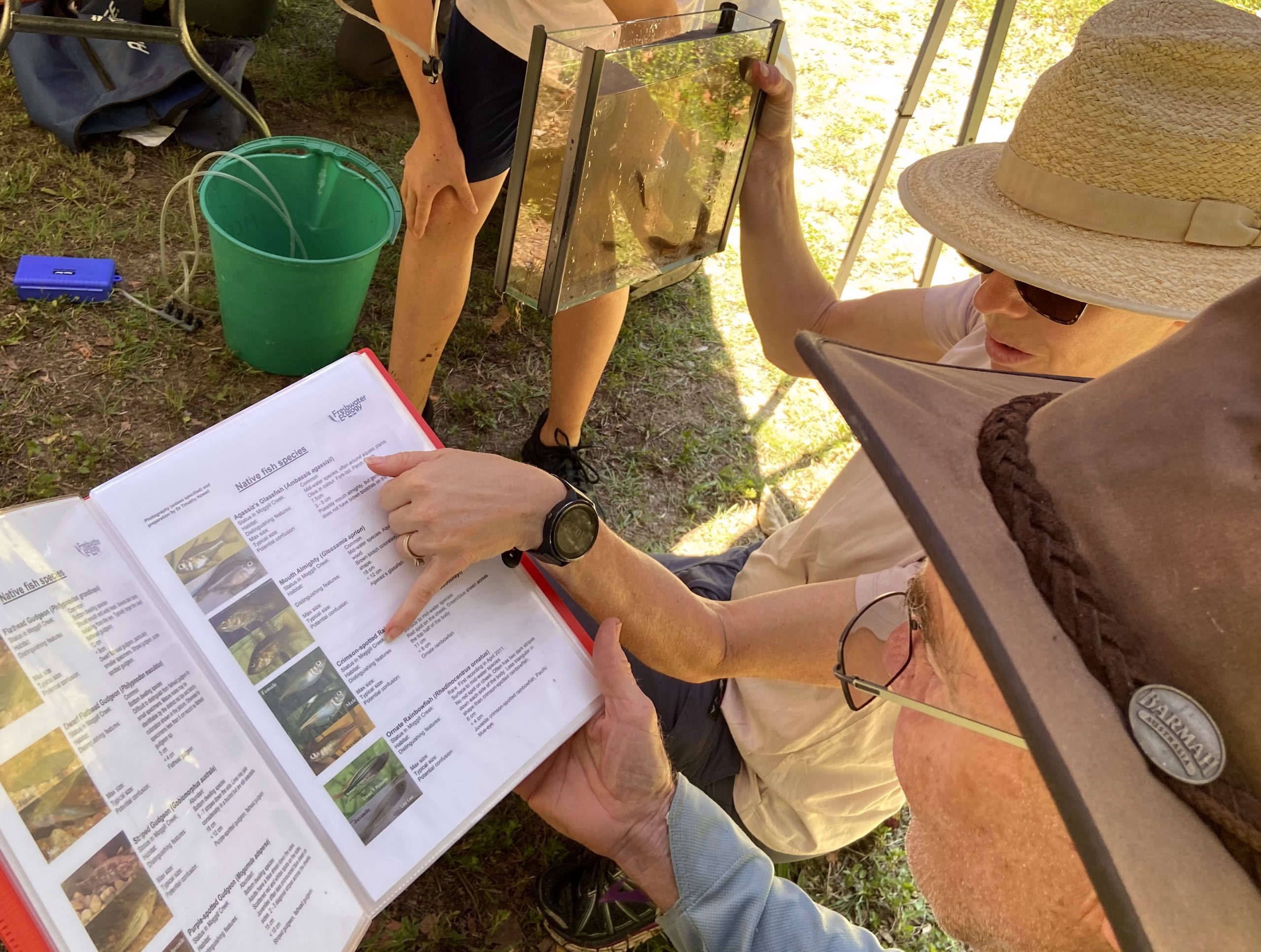
Using Fish ID charts (photo: Tracey Read)
You can see results from previous surveys by clicking here:
And you can view Ross Kapitzke’s photos from 2011. These were taken during the monitoring sessions at the Gold Creek and Moggill Creek survey sites.
The Moggill Creek Catchment Group Creek Health Monitoring Project is proudly supported by the Queensland Government—Queensland Citizen Science Grants.


